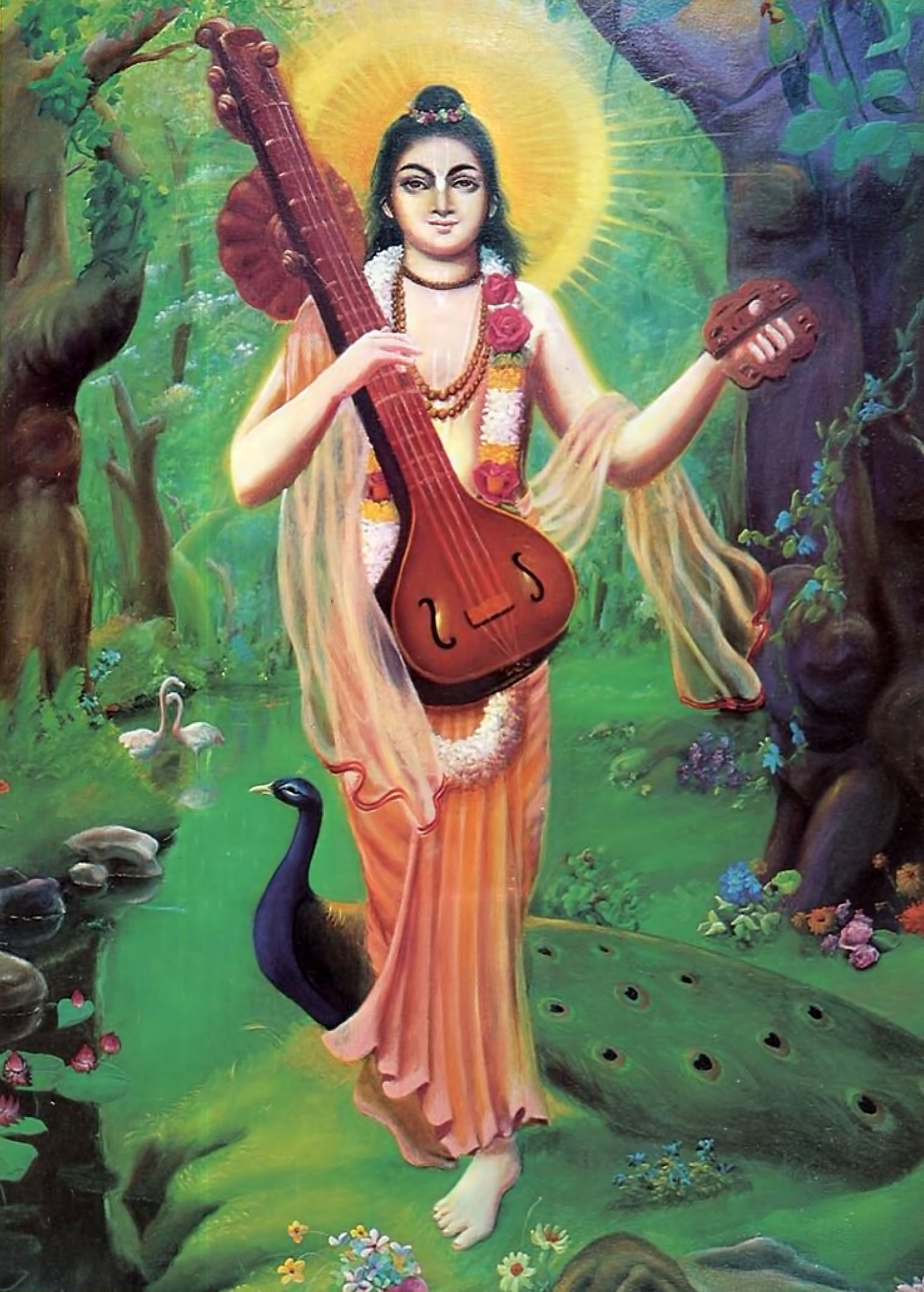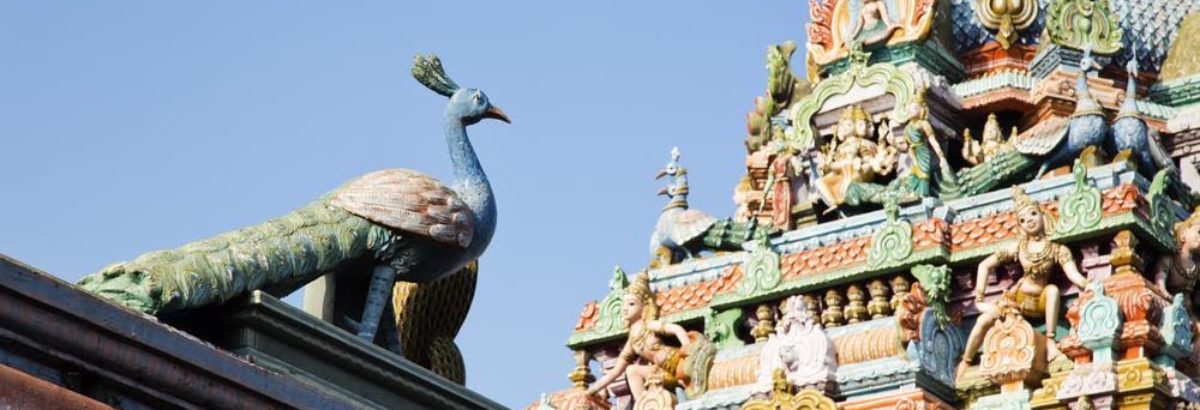MUSIC AND NARADA
Brahma the creator, indulges in the art for relaxation. Saraswathi, the Goddess of learning and music, invented the exquisite Veena, which bears her name.
Narada is a brilliant figure among the divine beings, in the musical world.

Narada means one who gives and spreads the name of the The God Narayana. Narada is a vedic sage who plays a prominent role in a number of Hindu Ithihasa puranas. He is depicted carrying Veena named Mahathi and a khartal and is generally regarded as one of the great masters of the ancient musical instrument Veena. Narada uses the Mahathi veena to accompany his singing of songs, prayers, hymns and mantras as an act of devotion to Lord Narayana. Narada represents Bhakti Yoga. The Narada Bhakti Sutra is attributed to him.
The great Ithihasa Mahabharata explains Narada’s qualifications and experience in detail. All celestial beings worshiped Narada for his knowledge. He was capable of arriving at definite knowledge about religion, wealth, salvation. Narada was a complete master of every branch of learning.
Karnataka Sangeetha Pitamaha, Sri Purandaradasa is said to be the incarnation of the sage Narada.
—– to be continued.
– Dr.V.Meenakshi Jayakumar


